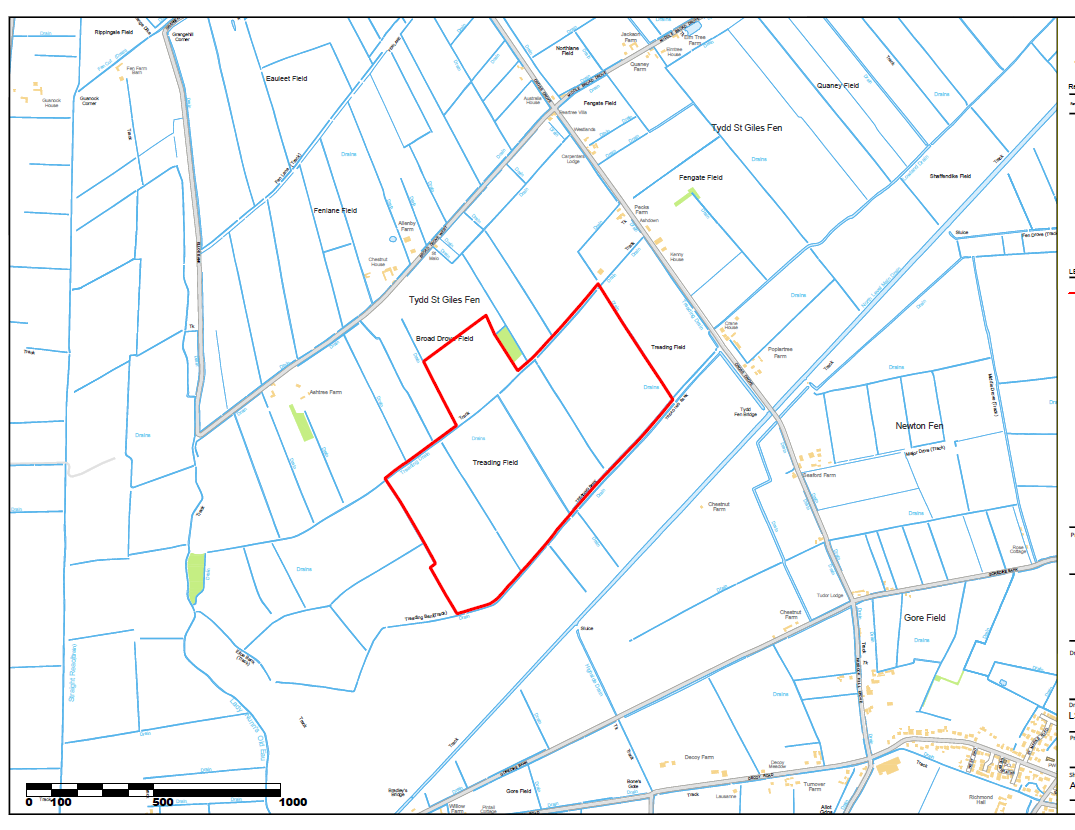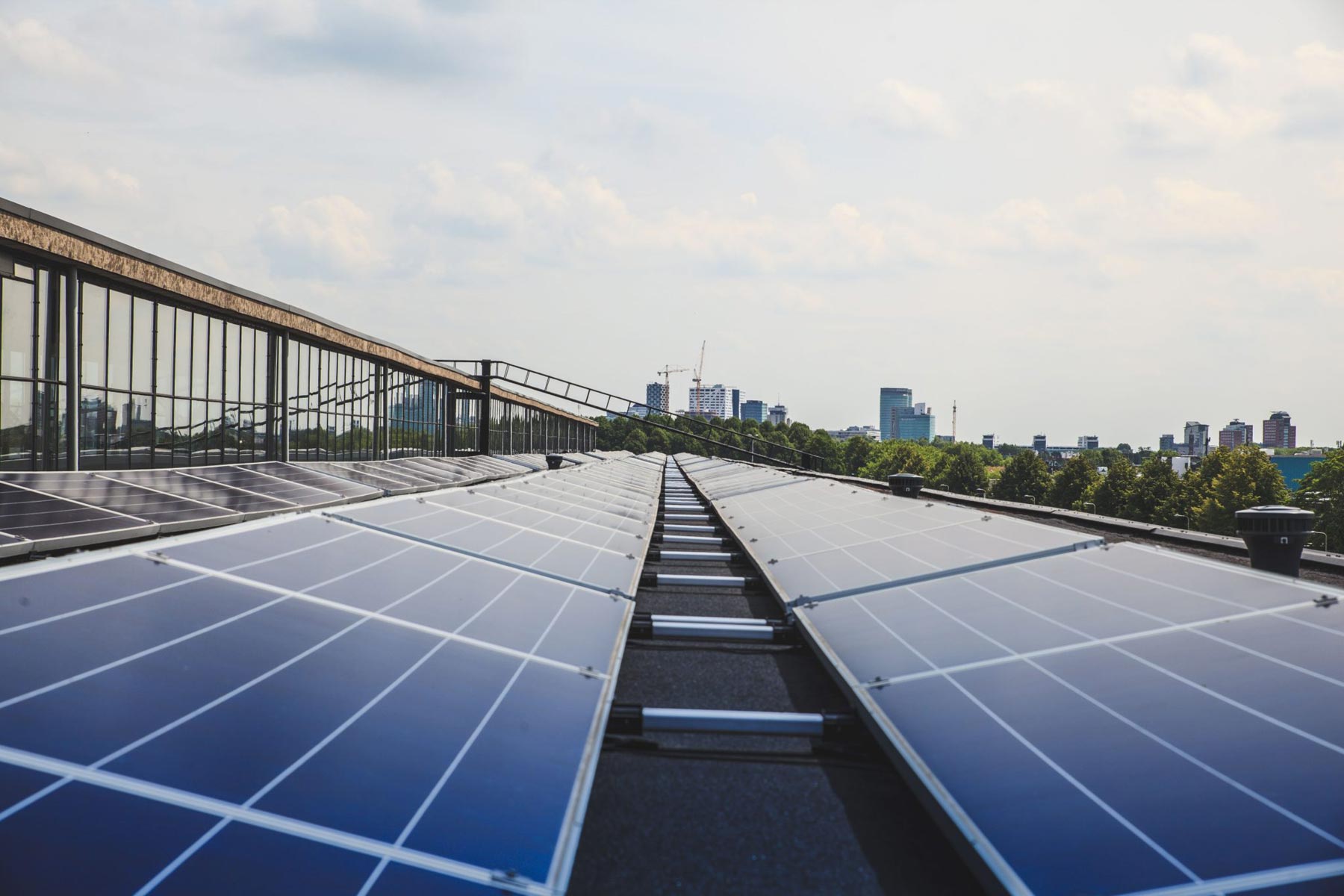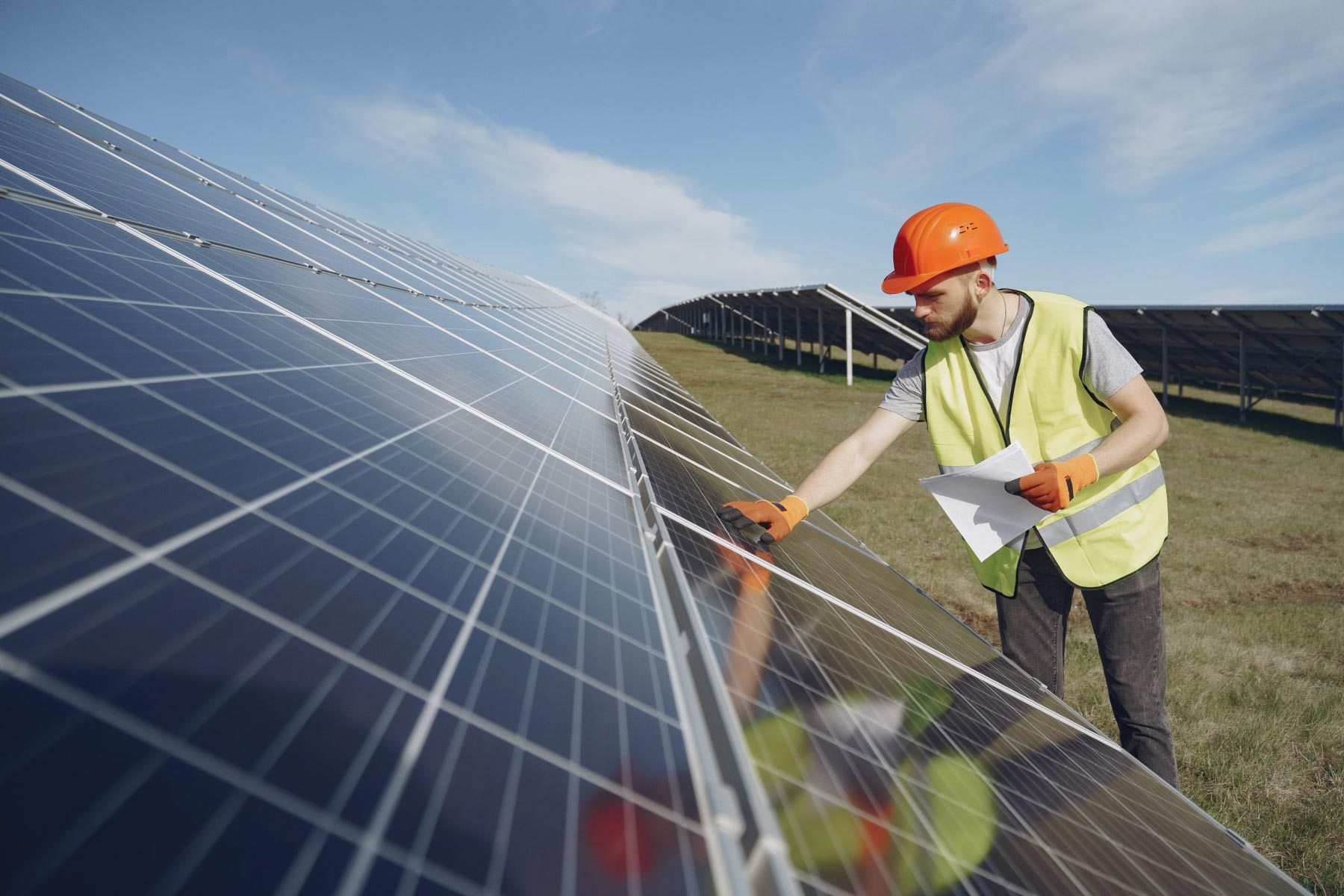TREADING BANK
SOLAR FARM
Renewable Connections is investigating the potential for a ground mounted utility scale solar farm, known as Treading Bank Solar Farm, with capacity up to 49.9MW near Wisbech, Cambridgeshire. Once operational, the project would supply enough power for up to 18,024 homes and make a valuable contribution towards tackling the climate emergency in Cambridgeshire and the wider UK.
As we prepare to submit an application to Fenland District Council, Renewable Connections is undertaking consultation to inform local communities of our proposed plans and invite any feedback to shape the submission details.
We hosted a community consultation event locally in May 2023. Comments provided by the local community will be taken into consideration and incorporated into the scheme, where appropriate, for the formal planning application ready for submission later this year.
We welcome any feedback you wish to provide so please do get in touch.

QUICK FACTS
9,635 tonnes
of CO2 saved annually
Equivalent annual energy needs of up to 18,024 homes
52,940 megawatt hours supplied each year
These figures are calculated using the following references. Last updated 22/06/2
- https://www.gov.uk/government/statistics/subnational-electricity-and-gas-consumption-summary-report-2021
- https://www.nationalgrideso.com/news/britains-electricity-explained-2022-review
Please note that these figures are representative of the first year of generation only. As new renewable energy projects are built, the electricity grid will de-carbonise and the relative carbon dioxide emissions avoided per year will reduce. This and all of Renewable Connections projects make a positive impact towards the UK’s net-zero targets
LOCATION
The proposed Treading Bank Solar Farm comprises approximately 73 hectares (ha) of agricultural fields located approximately 400m south east of Broad Drove West and south west of Cross Drove. The site lies wholly within the administrative boundaries of Cambridgeshire County Council and Fenlands District Council. The full Site location plan can be found below.
The Site is bounded by Treading Bank to its south east, and is located approximately 400 metres (‘m’) south east of Broad Drove West and 260 m south west of Cross Drove. The Site is largely flat and is generally screened from settlements via scattered vegetation across the flat landscape. The fields within the Site are divided and bound by a number of drains. The surrounding visual landscape is broken up by a line of large pylons running through the area, three of which are located within the Site itself, along the south eastern boundary.
The immediate area comprises similar agricultural fields, interspersed with small woodland blocks, individual farmsteads and clusters of residential properties. A series of high voltage electricity pylons run along the Site on its south east site.
Our plans are still in the development stages, so our design proposals will evolve as we gather local input and the results of our environmental assessments.
OUR PROPOSALS
If consented and installed, the solar farm will have a capacity of up to 49.9MWp and will be operational for up to 40 years. After that time, all of the installation will be removed and the land restored to how it was before, but with improved soil health and biodiversity due to being left fallow. The power generated will be exported to the grid via a substation connecting to existing powerlines which run through the site boundary.
The solar panels will be installed in rows which run east to west through the site. These rows will be tilted towards the south to capture the maximum amount of solar irradiation possible. The total height of the panels will be no more than 3m above the ground with a gap of more than 0.8m above the ground at its minimum.
Small electric cabins will be located amongst the panels and these will be accessed by a network of crushed stone track which will run through the site. All of the panels will be surrounded by a security fence to protect the equipment from large animals and unauthorised users entering the site. CCTV cameras will be located periodically around the site perimeter for security and will face inward.
The development will also involve additional landscaping including hedgerow planting and improved biodiversity management. The site is currently pasture and arable land with low ecological value, however with the implementation of a biodiversity management plan the site will be significantly enhanced for biodiversity by creating a range of new habitats, offering food and shelter to wildlife
PROJECT DOCUMENTS
PROJECT TIMELINE
STAGE 1
Site selection
Winter 2021
STAGE 2
Preliminary Surveys
Summer 2022
STAGE 3
Pre-application
Summer 2022
STAGE 4
Community Consultation
Spring 2023
STAGE 5
Submission
Summer 2023
STAGE 6
Construction
2025
THE NEED FOR THE PROJECT
Following the Government’s declaration of an “Environment and Climate Emergency” in May 2019, the Committee on Climate Change (CCC) advised that to meet ‘Net Zero’ targets, the UK will require substantial amounts of new, low carbon power sources to be built before 2050, up to four times that of today’s levels.
Fenland District Council recognise the Net Zero targets set out by the Government and the need to increase renewable and low carbon energy generation. The Emerging Local Plan is therefore supportive of proposals that will deliver renewable and low carbon energy, including ground-mounted solar PV installations, which work towards reducing the reliance on imported non-renewable energy and in turn vulnerability to volatile global markets.
Solar is one of the cleanest, lowest cost forms of energy available. The Treading Bank Solar Farm would make a meaningful contribution to the Fenland District’s energy needs by delivering green energy to the equivalent of up to 18,024 homes annually.
FAQ’s
Why this location?
This site has been identified following extensive site selection across Cambridgeshire which took into account environmental designations, local electricity network access and capacity, the physical characteristics of the site, including proximity to industrialised areas, and a supportive landowner.
Will there be any impacts on local roads?
For a period of approximately 6 months during construction, there will be deliveries of equipment to site. Renewable Connections will put in place measures to manage impacts of construction traffic and these measures will be included in a Construction Traffic Management Plan that will submitted with the planning application. There will be infrequent maintenance visits to the site during operation.
Will there be any permanent impact?
Solar farms are temporary and the land will be fully reinstated to farmland once the equipment is removed at the end of the project life.
Does solar pose a health risk?
No – solar is a passive technology which doesn’t produce any harmful by-products.
How long will the project be there?
The development proposes a life span of up to 40 years. No later than this, the development would be decommissioned, and the site returned to solely agricultural use. A decommissioning plan will be provided with the planning submission.
Are solar farms noisy?
No – solar farms are not noisy, producing no more than normal background levels of sound similar to wind or distant traffic beyond the site boundary.
What are the benefits to the local community?
Renewable Connections is committed to maximising benefits for the local community including establishing a community benefit fund. As well the environmental benefits of producing low carbon green energy, the project can improve local biodiversity via wildflower meadow planting, hedgerow infilling, as well as other ecological enhancement measures.
GET IN TOUCH
treadingbanksolar@renewableconnections.co.uk
0800 254 5011
Treading Bank Solar Farm,
LDN:W,
3 Noble Street,
London,
EC2V 7EE
Renewable Connections is committed to respecting your privacy and to complying with UK data protection and privacy laws. Our privacy policy explains how we collect, use, share and protect personal information


